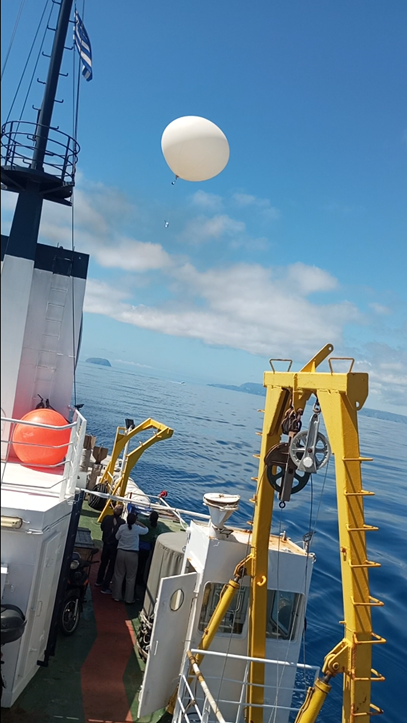From April 1-7, Dr. I. Christodoulakis participated in a research expedition as part of the CLIMPACT II project, pushing the boundaries of our understanding of atmospheric and marine interactions. Organized by the National Centre for Scientific Research “Demokritos” (NCSR Demokritos), in collaboration with the Hellenic Centre for Marine Research (HCMR), this ambitious research cruise aboard the R/V AEGAEO brought together a team from NCSR Demokritos, HCMR, the National Observatory of Athens, the University of the Aegean, and The American College of Greece.
The Center of Excellence in Sustainability (CoES) facilitated ACG’s participation in the research cruise through the SDG4U Erasmus+ project Campus as a Living Lab Activities.
The ACG-CoES participation focused on investigating the atmospheric structure over both coastal and open-sea areas. A key part of this research involved launching radiosondes to measure critical variables like temperature, humidity, pressure, and wind at various altitudes. One of these radiosondes reached a staggering 35 km before bursting in the stratosphere—an area where the pressure drops to 1/200th of what we experience at Earth’s surface.
During the cruise, ACG conducted a series of radiosonde launches to measure variations in temperature, humidity, atmospheric pressure, and wind patterns at different altitudes. Notably, during one of these experiments, a radiosonde reached an altitude exceeding 35 km. The balloon burst at the midpoint of the stratosphere—an area where atmospheric pressure is about 200 times lower and air density approximately 85 times lower than at Earth’s surface.
The experimental results gathered during this expedition will be published in a forthcoming CLIMPACT II project scientific publication, contributing valuable insights into atmospheric dynamics shaping our marine environments.
